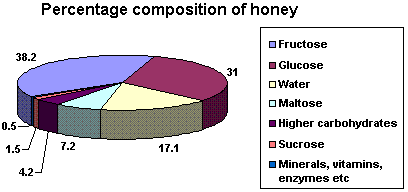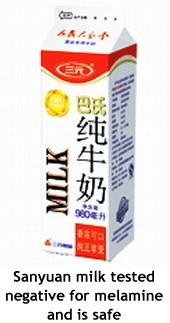Honey! This term reminds me of a sweet, sticky and thick liquid produced by fearful insects that sting painfully called bees.
Honey has many uses in daily life. Traditionally, it is believed to cure
 sore throats by mixing honey with lemon. It can be used to aid stomachaches and some eye problems. Recent researches have proven that honey can obstruct the growth of oral bacteria. It is able to coat the human throat and reduce throat irritation. Honey is also used to treat gastric or peptic stomach ulcers.
sore throats by mixing honey with lemon. It can be used to aid stomachaches and some eye problems. Recent researches have proven that honey can obstruct the growth of oral bacteria. It is able to coat the human throat and reduce throat irritation. Honey is also used to treat gastric or peptic stomach ulcers. Because of the antimicrobial properties present in honeys, honeys can be used to treat wounds and infections. The antimicrobial properties refer to the antibacterial, antifungal and antiviral properties of honey. Honey also allows blood to perform better circulation around the body and helps others cells, tissues and organs in the body to receive oxygen. The receive of oxygen is crucial for the brain to function properly. This makes honey an antioxidant.
Honey can be used to treat burns and postoperative wounds. Honey is also proven to be low in calories and contains a lot of sugar and minerals. Because honey conta
 ins very low calories, it is suitable to be used as a sweetener for diabetic patients, heart disease patients and overweight people.
ins very low calories, it is suitable to be used as a sweetener for diabetic patients, heart disease patients and overweight people.Scientists are still bemused about why honey provides many benefits for humans, but day after day, we are discovering more. Thanks, HONEY!!
Now, let's enumerate about WHAT IS HONEY!! Honey is a carbohydrate, belonging under the group of sugar and starch. Honey is made mostly of water and comprises two invert sugars, dextrose and levulose. Dextrose is glucose or sometimes called grape sugar, whereas levulose is fructose called occasionally fruit sugar.
Why the terms dextrose and levulose?? These terms originate from the use of the two prefixes, dexter and levis. Dexter which means right and levis which means left. Dexter turns the polarised light to the right and the latter turns it to the left.
These two invert sugars are simple sugars. Simple or natural sugars are sugars that can b
 e readily absorbed into the bloodstream without involving salivary, gastric or intestinal secretions. But, sugar cane and other artificial sugars must first be converted into simple sugars before they can be assimilated into the bloodstream.
e readily absorbed into the bloodstream without involving salivary, gastric or intestinal secretions. But, sugar cane and other artificial sugars must first be converted into simple sugars before they can be assimilated into the bloodstream.Besides dextrose and levulose, honey contains some proteins, many enzymes, vitamins, colouring matter, mineral elements like sodium, potassium, calcium, magnesium, iron, copper, and phosphorus and aromatic volatile oils.
However, researchers of honey are still arguing about the disputed vitamin content in honeys. Hoyle, who works for Lister Institute in London, Hawk, Smith and Bergheim claim that honey lacks vitamins. But, Dutcher, another scientist, claims that there is a very small, negligible amount of vitamin in honey. Then, Faber thinks that there could be no antiscorbutic vitamin (a vitamin that cures and prevents scurvy) in honey.
French scientists A. L. Clement, L. Inches, and Laborde found minute water-soluble vitamins, Vitamin B and C and fat-soluble vitamins, Vitamin A. Honey is soluble in water and becomes vinous (become or related to wines) when fermented. What is bemusing is whether honey is an animal product or a vegetable product? QUITE A DILEMMA for vegans and vegetarians.

Honey produced by bees is from the sugar type, white sugar. White sugar is a sugar in which all vegetable constituents are destroyed. So, honey is an animal product (from bees). Too bAD, vegans and vegetarians !!
Levulose is a more important sugar compared to dextrose. Sugar cane's sweetness is half as sweet as the sweetness of dextrose. And, more shocking is that levulose is two times sweeter than dextrose. Dahlia bulbs, some chicories, and the Jerusalem artichoke are rich in levulose of about 12-15 of percentage.
Levulose has a delightful flavour, easily absorbed or assimilated and highly soluble. It creates the good potential energy for human beings because it is a good glycogen (animal starch)producer. Glycogen is stored in the liver and muscles and converted to dextrose and is oxidised to supply energy for body cells. Because levulose absorbs slowly, it is suitable to be used by hyperglycaemia patients and does not cause rise in blood sugar levels.
The pie chart below will show the percentage composition of honey. CHECK it out!!
 | |||||||||||
 | |||||||||||
| | |||||||||||
According to the pie chart above, honey contains about 80% of carbohydrates. It has monosaccharides, fructose (38.2%) and glucose (31%). Honey also contains about 9% of disaccharides, sucrose, maltose, turanose and kojibiose. There are about 4.2% of oligosaccharides (short-chain carbohydrates) which includes erlose, theanderose, and panose. These saccharides are present in nectars and honeydews and are formed from the incomplete breakdown from higher saccharides.
Honey also have 18 free amino acids and the most abundant of the 18 is proline. Honey also contains invertase, which converts sucrose to fructose and sucrose to glucose (disaccharide-->monosaccharide). Honey also have amylase, glucose oxidase, catalase and acid phosphorylase.
Amylase can break down polysaccharide starch into smaller polysaccharides and disaccharides. Glucose oxidase converts glucose to gluconolactone. This, in turn, produces gluconic acid and hydrogen peroxide.
Catalase will, then, break down the hydrogen peroxide into water and oxygen. Acid phosphorylase rids inorganic phosphates from organic phosphates.
To cut a long story short, honey is an essential substance and brings a lot of benefits and helps human beings in many, different ways. We may not know it today, but someday, yes.












 content is high, it is mistaken to have high protein content. But, IT IS NOT!!
content is high, it is mistaken to have high protein content. But, IT IS NOT!!

 companies like
companies like



